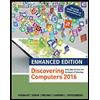Chapter 13 – Mobile Devices in Computer Forensics Review Questions (4 points) What are the different roles of mobile devices in crime? Answer: What problems do prepaid phones pose to investigators? Answer: What is mobile phone cloning? Answer: Which kinds of evidence can be retrieved from mobile phones and PDAs? Answer: Practical Exercise (3 points) Mobile devices have been the objectives of crimes (target). They have been utilized to commit crimes (tool). Sometimes the devices simply hold evidence of crimes (incidental). Conduct an online search for a case not described in this chapter where a mobile device was involved in a criminal or civil investigation. Name and reference/link the case that you discovered. Answer: What were some of the case’s critical facts? Answer: What was the specific role(s) of the mobile device in the investigation? Answer: (Continued on next page) Critical Thinking Questions (3 points) New mobile devices are constantly being introduced. How does this ever-changing market affect the work of a forensic investigator? What are some potential solutions? Answer (Impact): Answer (Solutions): In this and previous chapters, different electronic devices were considered. In a forensic sense, what do these devices have in common? How are they different? Answer (Commonalities): Answer (Differences): Is the forensic analysis of mobile devices easier or more complex than computer forensic analyses? Explain why.
Chapter 13 – Mobile Devices in Computer Forensics Review Questions (4 points) What are the different roles of mobile devices in crime? Answer: What problems do prepaid phones pose to investigators? Answer: What is mobile phone cloning? Answer: Which kinds of evidence can be retrieved from mobile phones and PDAs? Answer: Practical Exercise (3 points) Mobile devices have been the objectives of crimes (target). They have been utilized to commit crimes (tool). Sometimes the devices simply hold evidence of crimes (incidental). Conduct an online search for a case not described in this chapter where a mobile device was involved in a criminal or civil investigation. Name and reference/link the case that you discovered. Answer: What were some of the case’s critical facts? Answer: What was the specific role(s) of the mobile device in the investigation? Answer: (Continued on next page) Critical Thinking Questions (3 points) New mobile devices are constantly being introduced. How does this ever-changing market affect the work of a forensic investigator? What are some potential solutions? Answer (Impact): Answer (Solutions): In this and previous chapters, different electronic devices were considered. In a forensic sense, what do these devices have in common? How are they different? Answer (Commonalities): Answer (Differences): Is the forensic analysis of mobile devices easier or more complex than computer forensic analyses? Explain why.
Enhanced Discovering Computers 2017 (Shelly Cashman Series) (MindTap Course List)
1st Edition
ISBN:9781305657458
Author:Misty E. Vermaat, Susan L. Sebok, Steven M. Freund, Mark Frydenberg, Jennifer T. Campbell
Publisher:Misty E. Vermaat, Susan L. Sebok, Steven M. Freund, Mark Frydenberg, Jennifer T. Campbell
Chapter5: Digital Security, Ethics, And Privacy: Threats, Issues, And Defenses
Section: Chapter Questions
Problem 23SG
Related questions
Question
Chapter 13 – Mobile Devices in Computer Forensics
Review Questions (4 points)
- What are the different roles of mobile devices in crime?
- Answer:
- What problems do prepaid phones pose to investigators?
- Answer:
- What is mobile phone cloning?
- Answer:
- Which kinds of evidence can be retrieved from mobile phones and PDAs?
- Answer:
Practical Exercise (3 points)
Mobile devices have been the objectives of crimes (target). They have been utilized to commit crimes (tool). Sometimes the devices simply hold evidence of crimes (incidental). Conduct an online search for a case not described in this chapter where a mobile device was involved in a criminal or civil investigation.
- Name and reference/link the case that you discovered.
- Answer:
- What were some of the case’s critical facts?
- Answer:
- What was the specific role(s) of the mobile device in the investigation?
- Answer:
(Continued on next page)
Critical Thinking Questions (3 points)
- New mobile devices are constantly being introduced. How does this ever-changing market affect the work of a forensic investigator? What are some potential solutions?
- Answer (Impact):
- Answer (Solutions):
- In this and previous chapters, different electronic devices were considered. In a forensic sense, what do these devices have in common? How are they different?
- Answer (Commonalities):
- Answer (Differences):
- Is the forensic analysis of mobile devices easier or more complex than computer forensic analyses? Explain why.
Expert Solution
This question has been solved!
Explore an expertly crafted, step-by-step solution for a thorough understanding of key concepts.
This is a popular solution!
Trending now
This is a popular solution!
Step by step
Solved in 4 steps

Knowledge Booster
Learn more about
Need a deep-dive on the concept behind this application? Look no further. Learn more about this topic, computer-science and related others by exploring similar questions and additional content below.Recommended textbooks for you

Enhanced Discovering Computers 2017 (Shelly Cashm…
Computer Science
ISBN:
9781305657458
Author:
Misty E. Vermaat, Susan L. Sebok, Steven M. Freund, Mark Frydenberg, Jennifer T. Campbell
Publisher:
Cengage Learning


Enhanced Discovering Computers 2017 (Shelly Cashm…
Computer Science
ISBN:
9781305657458
Author:
Misty E. Vermaat, Susan L. Sebok, Steven M. Freund, Mark Frydenberg, Jennifer T. Campbell
Publisher:
Cengage Learning
